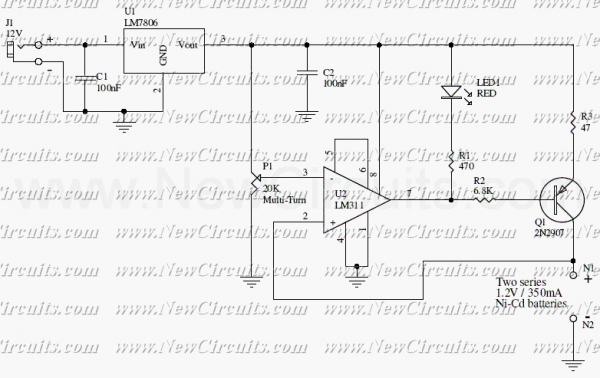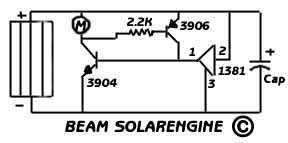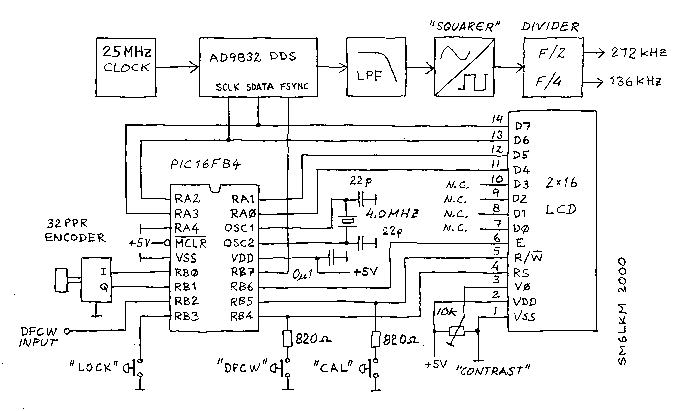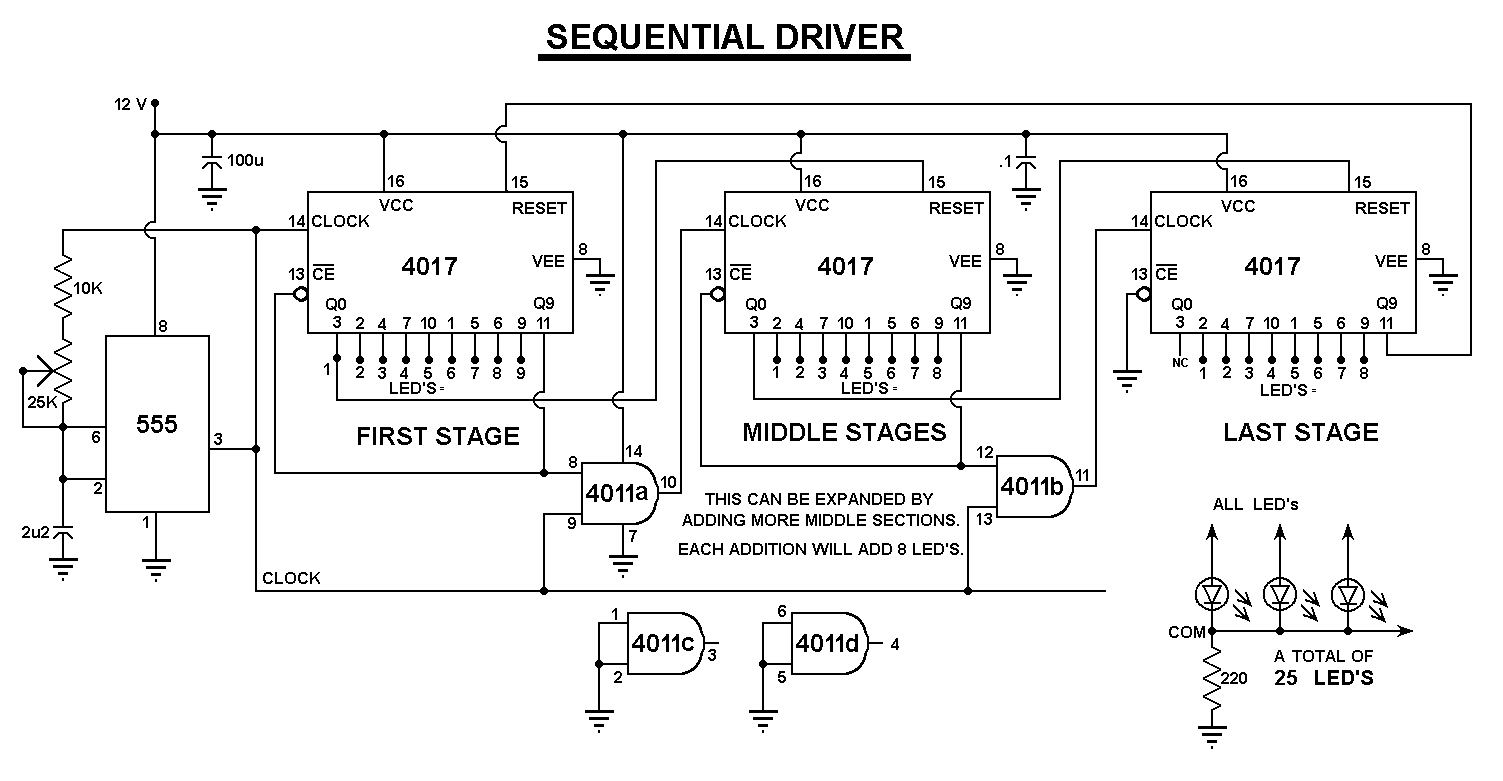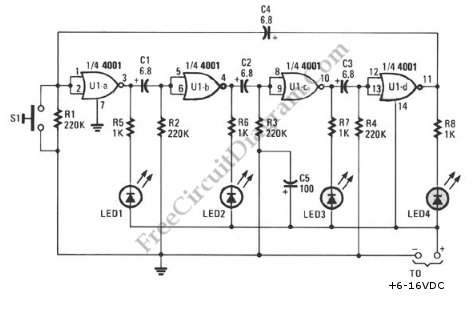
Solar Panel Based Charger And Small LED Lamp
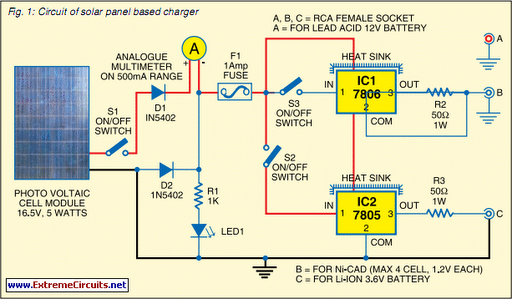
Savings on electricity bills can be achieved by utilizing alternative power sources. The photovoltaic module, or solar panel, described here has a power output of 5 watts and delivers 16.5V under full sunlight conditions, with a current output of 300-350 mA. This solar panel can charge three types of batteries: lead-acid, Ni-Cd, and Li-ion. Lead-acid batteries are commonly used in emergency lamps and uninterruptible power supplies (UPS). The circuit operates simply; the output from the solar panel is routed through diode 1N5402 (D1), which serves as a polarity guard to protect the solar panel. An ammeter is connected in series between diode D1 and a fuse to measure the current during battery charging. An analog multimeter set to a 500mA range is utilized for this purpose. Diode D2 is employed to prevent reverse polarity in the event of incorrect battery connections, causing the fuse to blow if the polarity is wrong. To charge a lead-acid battery, switch S1 to the 'on' position and use connector A. Upon connecting the battery, charging begins from the solar panel through diode D1, the multimeter, and the fuse. It is important to note that pulsating DC is optimal for charging lead-acid batteries; therefore, it is advised to replace the circuit with a standard pulsating DC charger weekly. Regularly check the water level of the lead-acid battery, as pure DC voltage may lead to sulfate deposition on the battery plates. For charging Ni-Cd cells, switches S1 and S3 should be turned to the 'on' position, and connector B should be used. Regulator IC 7806 (IC1) is configured as a constant current source, with its output taken from the middle terminal (typically grounded). This setup ensures a steady current is supplied to the Ni-Cd cells during charging, which consist of four 1.2V cells. Resistor R2 is used to limit the charging current. To charge a Li-ion battery (commonly used in mobile devices), switches S1 and S2 should be set to the 'on' position, and connector C should be used. Regulator IC 7805 (IC2) supplies 5V for charging the Li-ion battery, allowing for easy charging of a 3.6V Li-ion cell. Resistor R3 limits the charging current in this configuration. Additionally, a circuit for a compact LED-based lamp is illustrated. The design is straightforward and cost-effective, utilizing six 10mm white LEDs (LED2 through LED7) connected in parallel and powered directly by a 3.6V DC source. Either pencil-type Ni-Cd batteries or rechargeable batteries can serve as the power source. The circuit should be assembled on a general-purpose PCB and housed in a small enclosure. An RCA socket is to be mounted on the front panel of the enclosure, with an RCA plug wired to connect the battery and LED-based lamp to the charger.
The described circuit demonstrates a versatile solar charging system capable of supporting various battery types, enhancing energy efficiency and sustainability. The inclusion of protection diodes ensures safe operation, while the use of specific components like the 7806 and 7805 regulator ICs allows for controlled charging currents suited to the different battery chemistries. The design also emphasizes the importance of monitoring battery health, particularly for lead-acid batteries, and provides a practical solution for integrating LED lighting with renewable energy sources. The overall assembly is designed for ease of use and accessibility, making it suitable for various applications in renewable energy and portable power solutions.You can save on your electricity bills by switching to alternative sources of power. The photovoltaic module or solar panel described here is capable of delivering a power of 5 watts. At full sunlight, the solar panel outputs 16. 5V. It can deliver a current of 300-350 mA. Using it you can charge three types of batteries: lead acid, Ni-Cd and Li-io n. The lead-acid batteries are commonly used in emergency lamps and UPS. The working of the circuit is simple. The output of the solar panel is fed via diode 1N5402 (D1), which acts as a polarity guard and protects the solar panel. An ammeter is connected in series between diode D1 and fuse to measure the current flowing during charging of the batteries.
As shown in Fig. 1, we have used an analogue multimeter in 500mA range. Diode D2 is used for protection against reverse polarity in case of wrong connection of the lead-acid battery. When you connect wrong polarity, the fuse will blow up. For charging a lead-acid battery, shift switch S1 to on` position and use connector A. ` After you connect the battery, charging starts from the solar panel via diode D1, multimeter and fuse.
Note that pulsating DC is the best for charging lead-acid batteries. If you use this circuit for charging a lead-acid battery, replace it with a normal pulsating DC charger once a week. Keep checking the water level of the lead-acid battery. Pure DC voltage normally leads to deposition of sulphur on the plates of lead-acid batteries. For charging Ni-Cd cells, shift switches S1 and S3 to on` position and use connector B. ` Regulator IC 7806 (IC1) is wired as a constant-current source and its output is taken from the middle terminal (normally grounded).
Using this circuit, a constant current goes to Ni-Cd cell for charging. A total of four 1. 2V cells are used here. Resistor R2 limits the charging current. For charging Li-ion battery (used in mobile phones), shift switches S1 and S2 to on` position and use connector C. ` Regulator IC 7805 (IC2) provides 5V for charging the Li-ion battery. Using this circuit, you can charge a 3. 6V Li-ion cell very easily. Resistor R3 limits the charging current. Fig. 2 shows the circuit for a small LED-based lamp. It is simple and low-cost. Six 10mm white LEDs (LED2 through LED7) are used here. Just connect them in parallel and drive directly by a 3. 6V DC source. You can use either pencil-type Ni-Cd batteries or rechargeable batteries as the power source. Assemble the circuit on a general-purpose PCB and enclose in a small box. Mount RCA socket on the front panel of the box and wire RCA plug with cable for connecting the battery and LED-based lamp to the charger.
🔗 External reference
The described circuit demonstrates a versatile solar charging system capable of supporting various battery types, enhancing energy efficiency and sustainability. The inclusion of protection diodes ensures safe operation, while the use of specific components like the 7806 and 7805 regulator ICs allows for controlled charging currents suited to the different battery chemistries. The design also emphasizes the importance of monitoring battery health, particularly for lead-acid batteries, and provides a practical solution for integrating LED lighting with renewable energy sources. The overall assembly is designed for ease of use and accessibility, making it suitable for various applications in renewable energy and portable power solutions.You can save on your electricity bills by switching to alternative sources of power. The photovoltaic module or solar panel described here is capable of delivering a power of 5 watts. At full sunlight, the solar panel outputs 16. 5V. It can deliver a current of 300-350 mA. Using it you can charge three types of batteries: lead acid, Ni-Cd and Li-io n. The lead-acid batteries are commonly used in emergency lamps and UPS. The working of the circuit is simple. The output of the solar panel is fed via diode 1N5402 (D1), which acts as a polarity guard and protects the solar panel. An ammeter is connected in series between diode D1 and fuse to measure the current flowing during charging of the batteries.
As shown in Fig. 1, we have used an analogue multimeter in 500mA range. Diode D2 is used for protection against reverse polarity in case of wrong connection of the lead-acid battery. When you connect wrong polarity, the fuse will blow up. For charging a lead-acid battery, shift switch S1 to on` position and use connector A. ` After you connect the battery, charging starts from the solar panel via diode D1, multimeter and fuse.
Note that pulsating DC is the best for charging lead-acid batteries. If you use this circuit for charging a lead-acid battery, replace it with a normal pulsating DC charger once a week. Keep checking the water level of the lead-acid battery. Pure DC voltage normally leads to deposition of sulphur on the plates of lead-acid batteries. For charging Ni-Cd cells, shift switches S1 and S3 to on` position and use connector B. ` Regulator IC 7806 (IC1) is wired as a constant-current source and its output is taken from the middle terminal (normally grounded).
Using this circuit, a constant current goes to Ni-Cd cell for charging. A total of four 1. 2V cells are used here. Resistor R2 limits the charging current. For charging Li-ion battery (used in mobile phones), shift switches S1 and S2 to on` position and use connector C. ` Regulator IC 7805 (IC2) provides 5V for charging the Li-ion battery. Using this circuit, you can charge a 3. 6V Li-ion cell very easily. Resistor R3 limits the charging current. Fig. 2 shows the circuit for a small LED-based lamp. It is simple and low-cost. Six 10mm white LEDs (LED2 through LED7) are used here. Just connect them in parallel and drive directly by a 3. 6V DC source. You can use either pencil-type Ni-Cd batteries or rechargeable batteries as the power source. Assemble the circuit on a general-purpose PCB and enclose in a small box. Mount RCA socket on the front panel of the box and wire RCA plug with cable for connecting the battery and LED-based lamp to the charger.
🔗 External reference
